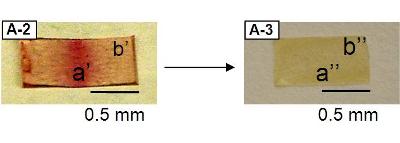Professor Marek W. Urban from the University of Southern Mississippi in Hattiesburg has explained a new class of plastics that heal like the human skin at the American Chemical Society’s (ACS) 2012 National Meeting & Exposition.
 New plastics turn red when damaged, then heal themselves when exposed to light.
New plastics turn red when damaged, then heal themselves when exposed to light.
The plastics have the potential to offer self-repairing surfaces for cars, laptops, cell phones and various other products.
Formation of a new bark from the cuts of a tree trunk and human skin healing are some of nature’s biological systems with self-repairing abilities. The new class of plastics mimics the nature to heal scratches and cuts. Materials science researchers are working on various approaches to develop self-healing plastics. One of them is implanting plastics with capsules. When the plastics are scratched or cracked, the capsules breaks and release repairing agents to heal the cracks or scratches. The creation of plastics that respond to an external stimulus like a chemical agent, heat or light for self-healing is another approach focused on by the researchers.
Urban and his team have developed plastics with small molecular links, also referred as bridges. When these plastics are cut or scratched, the links break and their shape changes. This produces a clear color change, a red signal, around the damaged area. The cuts or cracks are healed under visible light from a bulb or normal sunlight, temperature or pH changes. Another benefit of the new plastic is that it has an ability to repair itself repeatedly. In addition, the plastic is water-based and prevents the use of toxic ingredients. Hence, it is more environment-friendly than other plastics.
Urban expects a variety of application for plastic with warning and self-repairing capabilities. In the automobile, scratches in fenders can be healed by exposing the component to powerful light. Similarly, in aircraft, the structural parts may warn of damage by producing a red signal along the cracks. This can enable the engineers to decide whether to repair the damage by exposing the parts to light or to completely replace the components.